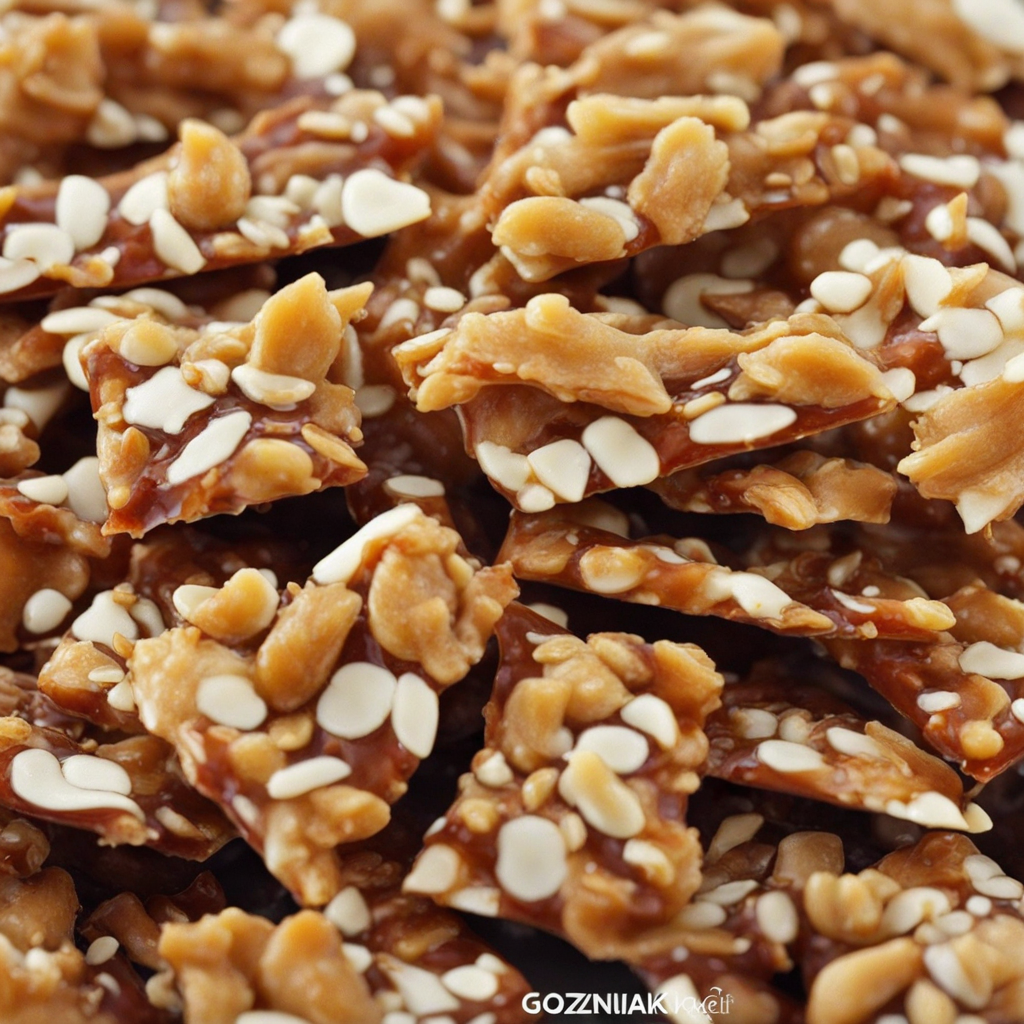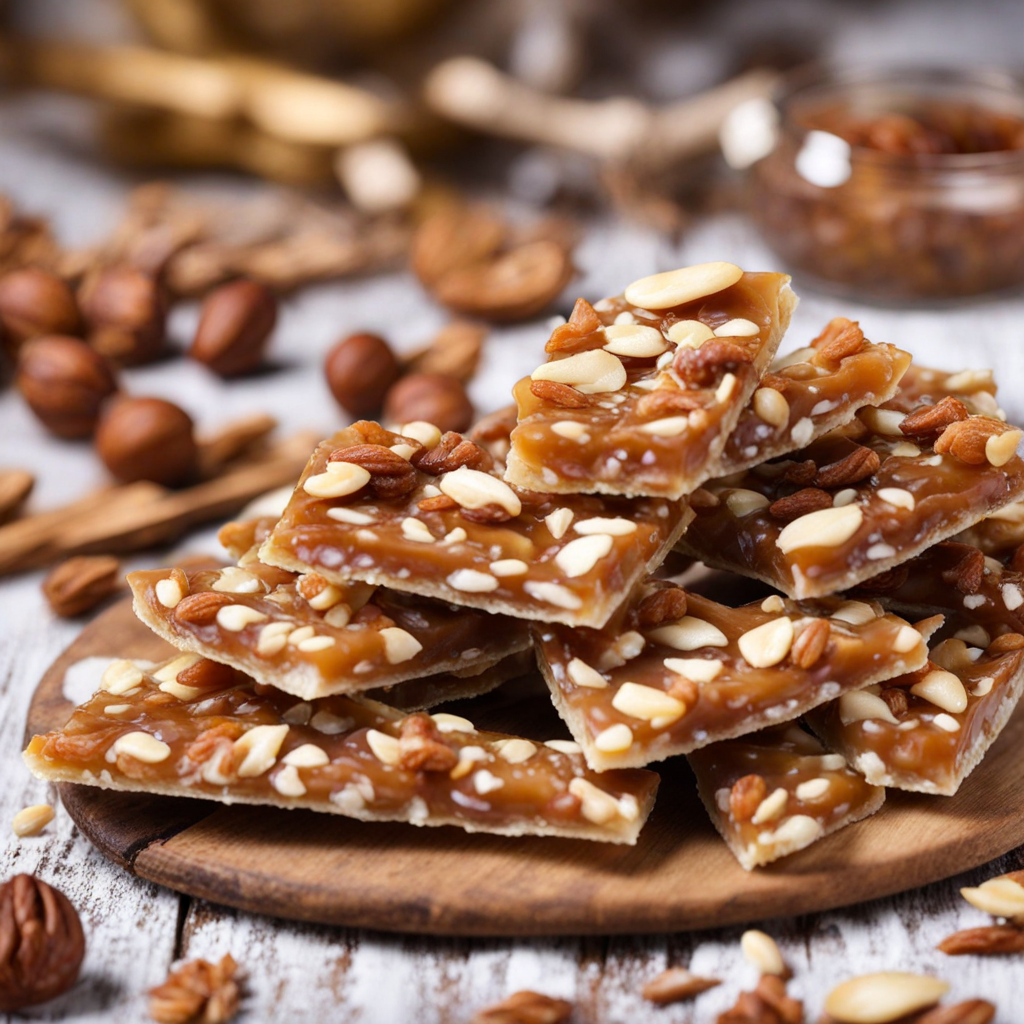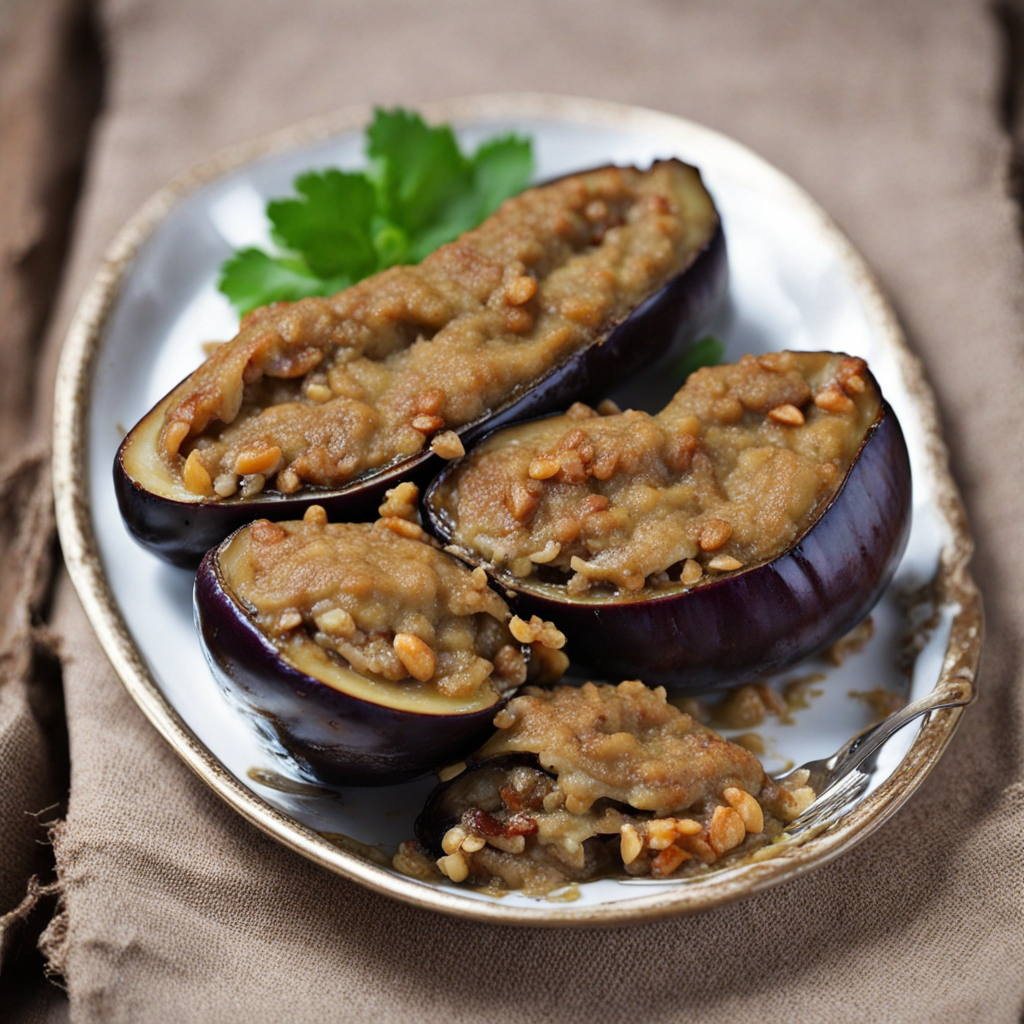Gozinaki
Gozinaki is a traditional Georgian confection that showcases the rich culinary heritage of the country. This delightful treat is primarily made from nuts, typically walnuts or hazelnuts, which are caramelized in a mixture of honey and sugar. The nuts are roasted to enhance their flavor, then coated in the sticky, sweet syrup, creating a crunchy texture that perfectly balances the gooey sweetness of the honey. The result is a mouthwatering snack that is both satisfying and indulgent, perfect for those looking to explore new taste sensations. What sets Gozinaki apart is its unique flavor profile, which is a harmonious blend of sweetness and nuttiness. The honey used in the recipe not only adds sweetness but also infuses the candies with a floral aroma that tantalizes the senses. Each bite delivers a burst of flavor, as the crunchy nuts provide a satisfying contrast to the smooth, syrupy coating. This combination makes Gozinaki a truly unique experience, reminiscent of other nut-based sweets but with a distinctly Georgian twist. Traditionally enjoyed during the New Year celebrations and other festive occasions, Gozinaki encapsulates the warmth and hospitality of Georgian culture. It is often served alongside tea or coffee, making it a perfect accompaniment for social gatherings. As you savor this delightful treat, you’ll not only discover a new taste but also a piece of Georgia’s rich history and traditions, inviting you to return for more of its enchanting flavors.
How It Became This Dish
The History of გოზინაყი (Gozinaki): A Sweet Legacy from Georgia Gozinaki, a traditional Georgian confection made primarily from nuts and honey, is more than just a treat; it is a symbol of Georgian culture and heritage. This delightful sweet, often enjoyed during celebrations and special occasions, carries with it a rich tapestry of history, cultural significance, and evolution that reflects the spirit of the Georgian people. Origins of Gozinaki The origins of gozinaki can be traced back to ancient Georgia, a region known for its diverse agricultural bounty and favorable climate, which has allowed for the cultivation of various nuts, particularly walnuts, and the production of honey. The earliest mentions of honey and nut confections date back to the 4th century BC, with references found in writings by the Greek historian Xenophon, who noted the abundant natural resources of the region. Gozinaki is believed to have evolved from traditional methods of preserving nuts and honey, which were staples in the Georgian diet. The combination of these two ingredients not only provided sustenance but also held significant nutritional value. The practice of mixing nuts with honey likely began as a means of creating a sweet treat that was both delicious and energy-rich, ideal for consumption during the harsh winters. Cultural Significance In Georgian culture, gozinaki is steeped in tradition and is particularly associated with the celebration of the New Year, or "Shoba." During this festive period, families gather to prepare and share gozinaki as a way to symbolize prosperity, health, and good fortune for the coming year. The preparation of gozinaki often involves the entire family, creating a sense of unity and collective joy that is inherent to Georgian customs. Gozinaki is not only consumed during the New Year but also during other significant events, such as weddings, religious holidays, and family gatherings. It is often offered as a gesture of hospitality to guests, reinforcing the importance of community and togetherness in Georgian society. The sweet is sometimes adorned with intricate designs, adding an artistic touch that reflects the creativity and craftsmanship of Georgian culture. Development Over Time As Georgia has undergone various historical transformations, so too has the recipe and preparation of gozinaki. During the Soviet era, with the rise of industrialization, the traditional methods of making gozinaki began to adapt. While the core ingredients remained the same, the availability of commercially produced nuts and honey led to a shift in the way this confection was prepared. Mass production made gozinaki more accessible, but it also diluted some of the artisanal aspects of its preparation. In recent years, there has been a resurgence of interest in traditional Georgian cuisine, including gozinaki. This revival is part of a broader movement to celebrate and preserve Georgian culinary heritage, especially among younger generations. Chefs and home cooks alike are returning to traditional recipes, often experimenting with new variations that incorporate different nuts, spices, or even chocolate. One notable development in the contemporary landscape of gozinaki is the increasing awareness of health and sustainable eating. Many modern recipes emphasize the use of organic honey and locally sourced nuts, aligning with global trends towards healthier, more environmentally friendly food practices. This evolution has not only preserved the essence of gozinaki but has also allowed it to adapt to changing dietary preferences. Gozinaki Around the World With the diaspora of Georgians around the globe, gozinaki has found its way into international culinary scenes. Georgian restaurants and cultural festivals in various countries celebrate this traditional sweet, introducing it to new audiences. The unique combination of flavors and textures has garnered interest from food enthusiasts, leading to creative interpretations of gozinaki that incorporate local ingredients or culinary techniques. In addition to its growing popularity abroad, gozinaki has also become a symbol of national pride for Georgians living outside their homeland. It serves as a reminder of their cultural roots and traditions, allowing them to share a piece of their identity with others. The act of making and sharing gozinaki has become a way for communities to connect, fostering a sense of belonging and continuity amidst the challenges of living in a foreign land. Conclusion Gozinaki is more than just a sweet treat; it is a cultural artifact that embodies the history, traditions, and resilience of the Georgian people. Its journey from ancient origins to modern kitchens reflects the adaptability of Georgian cuisine, which continues to evolve while honoring its past. As families gather to make gozinaki during festive occasions, they are not merely preparing a dessert but are participating in a ritual that binds them to their heritage and to one another. In a world increasingly focused on fast food and convenience, gozinaki stands as a testament to the value of traditional cooking and the importance of preserving culinary legacies. Whether enjoyed in its classic form or through modern adaptations, gozinaki remains a beloved staple in Georgian culture, symbolizing the sweetness of life, the richness of community, and the enduring spirit of a nation.
You may like
Discover local flavors from Georgia







